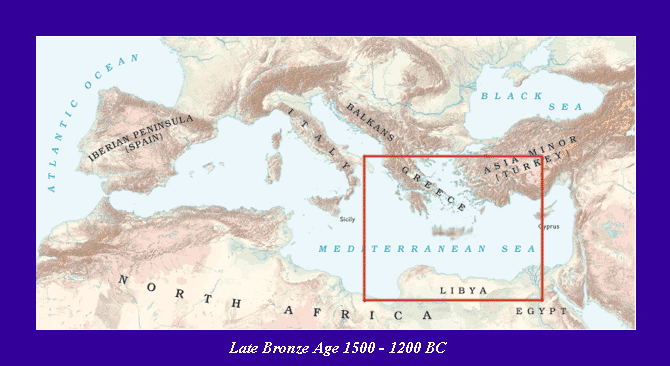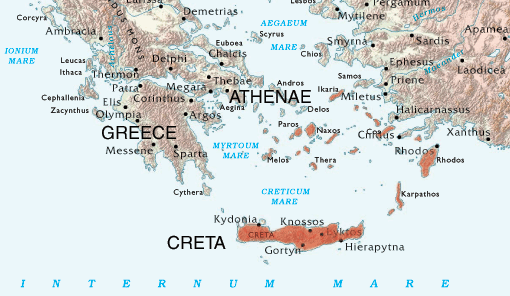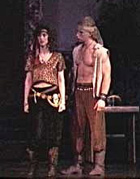|
Where
is the first evidence of a 'class movement' in ancient history?
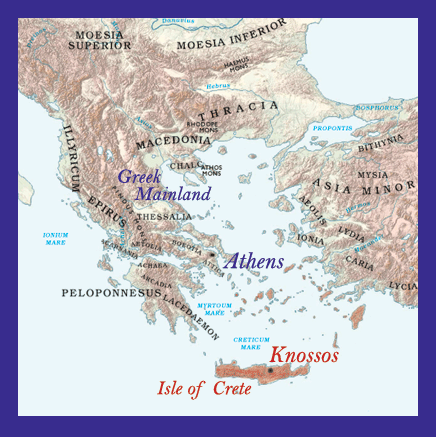 Where does the American Dream actually begin?
Where does the American Dream actually begin? |
TIME PERIOD
1400 BC
The
Late Bronze Age
Preceding the “Dorian
Invasion” of Greece–which many
scholars believe was not an invasion
at all, but a Middle-Class
movement from within:.....
To secure rights
and a better life for the
peasant and craftsman populations ruled by a rich, military
upper–class at that time, the Myceneans.
MORE
|
The
beginning of this middle-class movement can be
traced back years before to a philosopher-prince called Theseus
-- of Indo-European ancestry -- and a group of comrades
from Athens, thought to be organizing the first craft guilds and free-markets
for peasant farmers in the Attica region of Greece -- hoping
to expand this to all the kingdoms of the Greek Mainland
-- against the wishes of the ruling class.
|
But this occurs
at a time when the
Island-Empire of Crete in the Mediterranean -- the dominant sea-power
of the time -- was apparently considering
conquest and expansion onto the Greek
mainland, before it could unify and compete
against them in the Asian trade.
Legends suggest as a first step, a series
of taxes were placed on the kingdoms of the Greek Mainland.
|
|
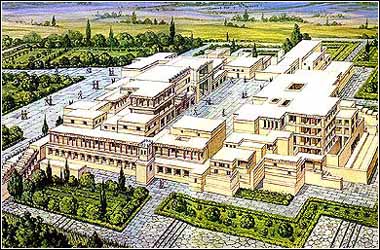 |
It is
believed Theseus and his friends were sent to the
capital city of Knossos, Crete -- as tax payments to perform in
the dangerous Cretan gladiator sport,
the Bulldance -- presumably
never to be heard from again.
|
Admin.-Complex
at Knossos, Capitol of Crete
|
|
However,
the young group not only survives --
but by making alliances with the athletes already there, and craftsman-trade
factions within the Cretan government -- they are able
to upset the Cretan plans for
conquest, and return to Greece to start a democratic
tradition at Athens.
AUTHOR'S NOTE:
Clearly, this would have been a major, high-risk political undertaking
--
'...Young people making choices about the world they live
in...'
and this is where all
the central ideas and concepts of the story come into play
-- See
Themes
|
Later, beyond our story
-- the ruling Myceneans were in fact driven out of power on the Greek
Mainland. And though the country reverted to a "dark age"
of regional conflict and strife soon after -- some elements of the democratic
form survived in Athens until its full rejuvenation in the Classical,
or Golden Age.....800 years later.
STORY
SYNOPSIS
The
Saga Unfolds...
The story begins with a young philosopher called Theseus,
and five comrades from Athens
-- with the vision of a working-class society for barbaric,
mainland Greece -- which is still divided into many small kingdoms
-- often at war -- and a rich military class ruling over large
peasant populations. |
| But
the group is sent to the capitol city of Knossos, Crete
-- as tax payments to perform in the famous Cretan gladiator sport,
the Bulldance.
And here the struggle begins not only to survive as a team in
the dangerous sport; |

The Bulldance
|
but also to
find some way to stop the Cretan plans
for conquest of Greece. Either by getting support from
the indentured athletes
already sent there by their homelands -- or from some political
faction on Crete itself.
|
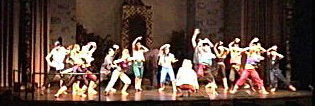
The Indentured Athletes
- "The Bulldancers"
|
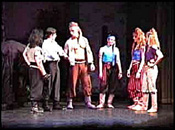 The "Free-Thinkers"
The "Free-Thinkers"
|
But this is
no small challenge;
because the athletes have no reason for patriotic loyalty to the
class-system of the Mainland, quite the contrary -- as pointed
out by their charismatic, anti-political
leader, Maicedonia [Maice]
and his immediate circle of friends, the "free-thinkers".
And the political mood of the Cretan government has definitely
shifted toward militarization and conquest
of the Greek Mainland, before it can threaten the Islands of Crete
-- as led by the powerful senator Rhadamanthos,
who makes a convincing argument for Nationalist survival; and
social order over social freedom. |
But
key romantic alliances develop between
Theseus and Ariadne,
daughter of the aging Emperor
Minos,of Crete, -- who
is in touch with a small
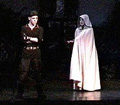 |
|
Theseus & Ariadne
|
|
but persistent peace/trade faction
within the Cretan government. And
also between Maicedonia and Sinjah
-- (a lonely young outcast from the Omazons)
-- who joins the Athenians in the team-method of the
Bulldance-- and later, their political cause as
well. |
| The
fast-moving story reaches a peak
when Rhadamanthos and the
Expansionists obtain
enough votes for conquest of Greece, and the Emperor's throne--
as Minos makes a final offer of help to Theseus and the
Athenians before his death. |

|
|
Rhadamanthos
|
|
And in an ironic twist, Maicedonia
is killed while saving the life of Theseus in the
last stadium event before the planned revolution-- whereby
the Athenians finally strike an
alliance between all of the Bulldancers -- and
militia forces opposing Rhadamanthos in the city of Knossos.
|
And in the final scene
,
an earthquake [historically
documented]
-- could play
a role in the story's dramatic conclusion..... |
|
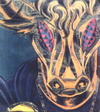
Minos, with the
Taurean Crown
|
|
|
|

